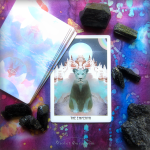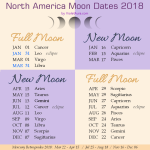
U.S. Game Systems
If the Death card has made its way into your Tarot reading, and you are unfamiliar with its meaning, the traditional image can be unsettling. The name of the card by itself can be worrisome for someone new to Tarot, even if its interpretation is nearly never meant to be taken literally.
Be assured that the card’s meaning is not as frightful as the traditional image of it can appear to be. In a previous article titled, The Five Remembrances via the Death Card in Tarot, I very briefly touched on some of the Death card’s symbolism and its connection to teachings about impermanence.
Before going into its meaning a bit further, I would first like to share some background and insight into the Tarot card reading profession for a moment regarding this card.
Imagery is Everything
There are a handful of cards in a Tarot deck that discerning or conscientious Tarot readers must see the artwork for and approve of, before purchasing a deck to use with clients. These cards have special significance to a Tarot reader. The image on the Death card is one of the most notable.
The general artwork and its nuances within the image of the Death card can be so critical for a Tarot reader to agree with, that disapproval for the artwork for just this one card can be a deal breaker. When a new deck is published, typically the Death card is among one of the first images shared.
Many Tarot card readers will go out of their way when choosing a non-traditional Rider-Waite style Tarot deck, to make sure that the image of the Death card will not cause upset for clients who are unfamiliar with its meaning if the card shows up in a reading. When it does show up, extra time will typically be given to make it absolutely clear for the client that its meaning is not literal and should be taken in its proper context.
 Likewise, the artists who create the beautiful artwork for the modern non-traditional Tarot decks are aware that Tarot readers scrutinize certain cards, with the Death card being one of them especially.
Likewise, the artists who create the beautiful artwork for the modern non-traditional Tarot decks are aware that Tarot readers scrutinize certain cards, with the Death card being one of them especially.
The challenge for an artist is to convey the card’s meaning properly, relating it to the overall theme of the Tarot deck they are creating, and at the same time, to not create an image that completely misinterprets or changes the foundation of what the card traditionally means to a Tarot reader. This is true for all cards of the deck, however it is especially the case many times with the Death card in particular.
Transitioning from Tradition
The meaning of the Death card in most modern translations in a nutshell means: radical change, rebirth, transformation, closure, starting again/starting anew, or that news of change will come from a messenger. Other interpretations according to Tarot’s creator, Arthur Waite, include the Death card to possibly mean a shift in consciousness, creation, or a destination in a real physical sense vs. a mystical sense.
As a matter of fact, some of the more non-traditional decks these days use an alternative image, such as a rising phoenix or a raven in place of the classic Reaping Skeleton Rider or the more familiar Grim Reaper images to translate the Death card. These images in a lot of cases can relate more closely to its adapted modern meaning without causing alarm. The word Death on the card in some decks is even removed and an alternate word is attached. The card is otherwise identified as the Major Arcana Death card when numbered 13 or XIII.

Tarot Death Card Variations. Photo © Angelorum.co
Friend and Tarot Professional, Lisa Eddy, shares a beautiful photograph above of some artistic variations of the Death card from a few of her modern, well-loved Tarot card decks. She has years of experience and fantastic articles about the Tarot and other divination and spiritual topics at her website, Angelorum.co so please be sure to visit her to read more!
Pictured from left to right is the Death card depicted with a Phoenix from the Shadowscapes Tarot, the Transformation card with the silhouette of a Buddha holding auspicious items from the Osho Zen Tarot, and The Journey card with a Raven from the Wildwood Tarot. All are marked with the number 13.
Transformation and Rebirth
Interestingly, the Death card is a very focal card for readers, artists and querents alike. The card whose meanings can include transformation and rebirth is experiencing its own transformation and rebirth as the Tarot itself continues to evolve. Regardless of the image or label attached to a deck’s #13 Major Arcana card, its history and symbolism continues to capture the interest of enthusiasts. The traditional image continues to be regarded as one of the most recognizable and well known cards from a Tarot deck in the mainstream.
Do you have any experiences with the Death card that you would like to share? Is the image on a Death card important to you when selecting a deck or when having your cards read? Let me know your thoughts in the comments or in an email!
Warm blessings,
[sig]











The Death card is not as crucial to me when choosing a deck as The Empress but what you say here is true and we do have to consider reactions from Seekers/clients who have not studied the archetypal meanings. My favourite ever Death card is found in the Margarete Petersen Tarot deck. Sadly I got rid of it because I found the Minors too difficult to read with. I wouldn’t mind a poster of the MP Death card on my wall though… Hmmmm…